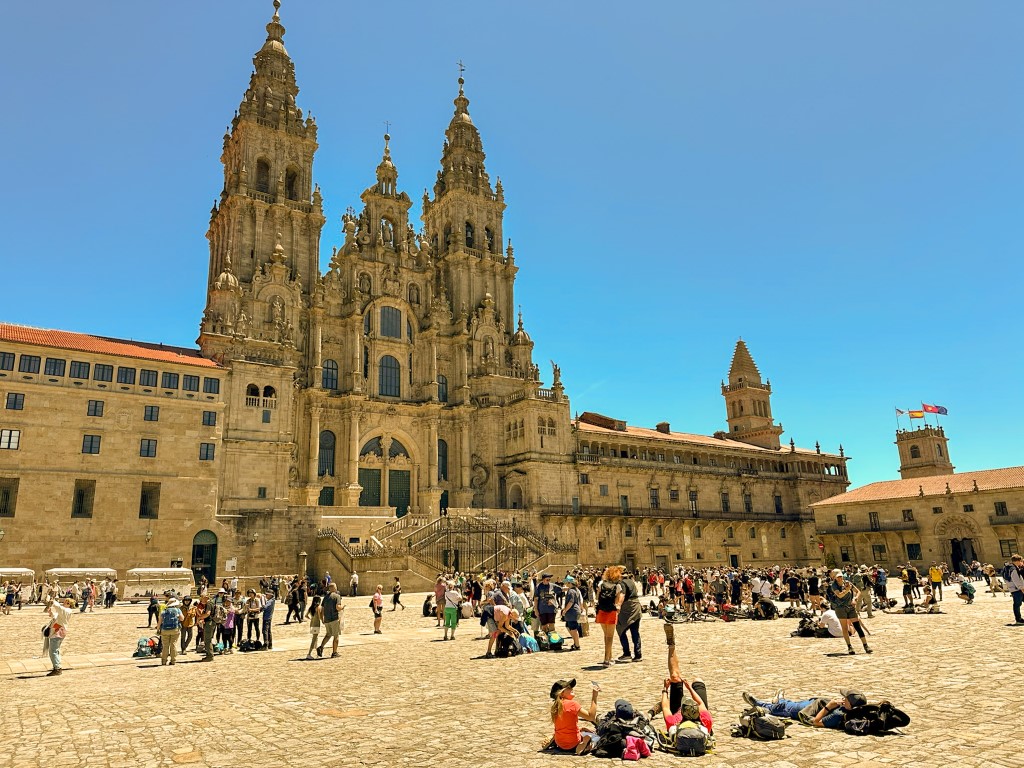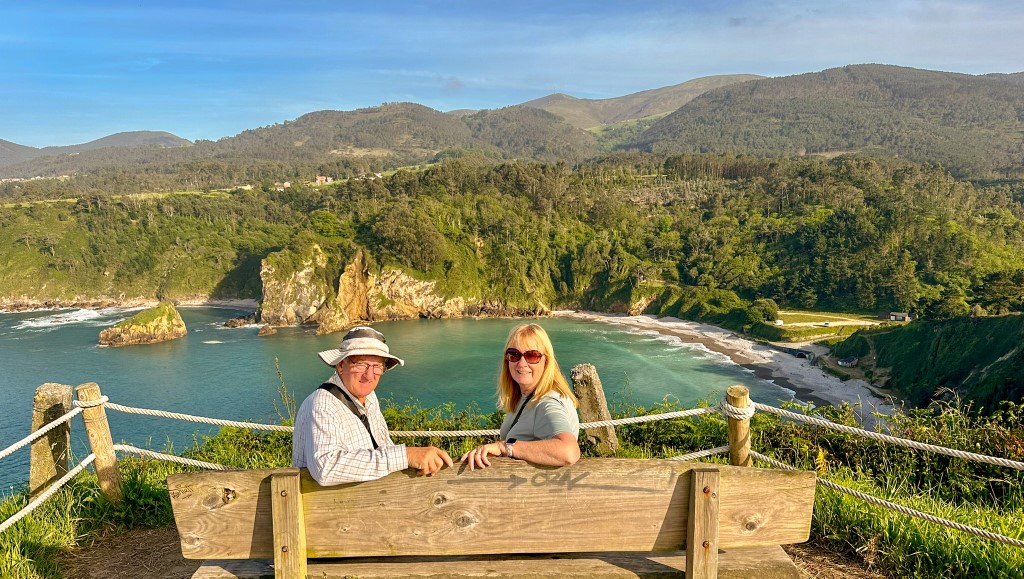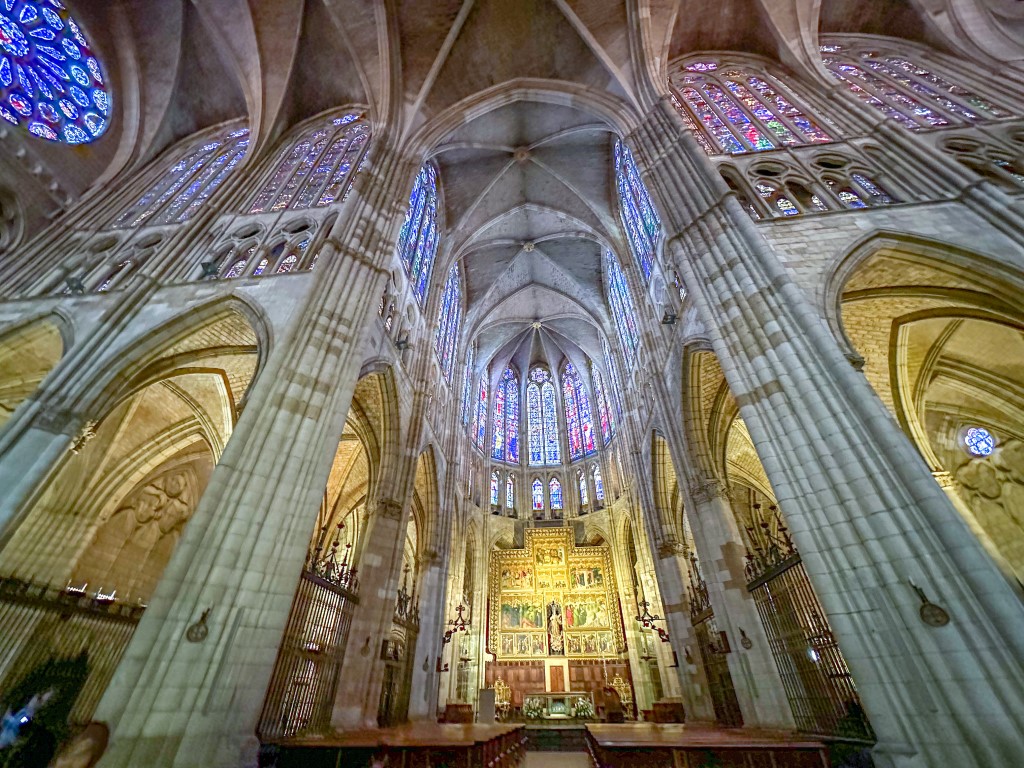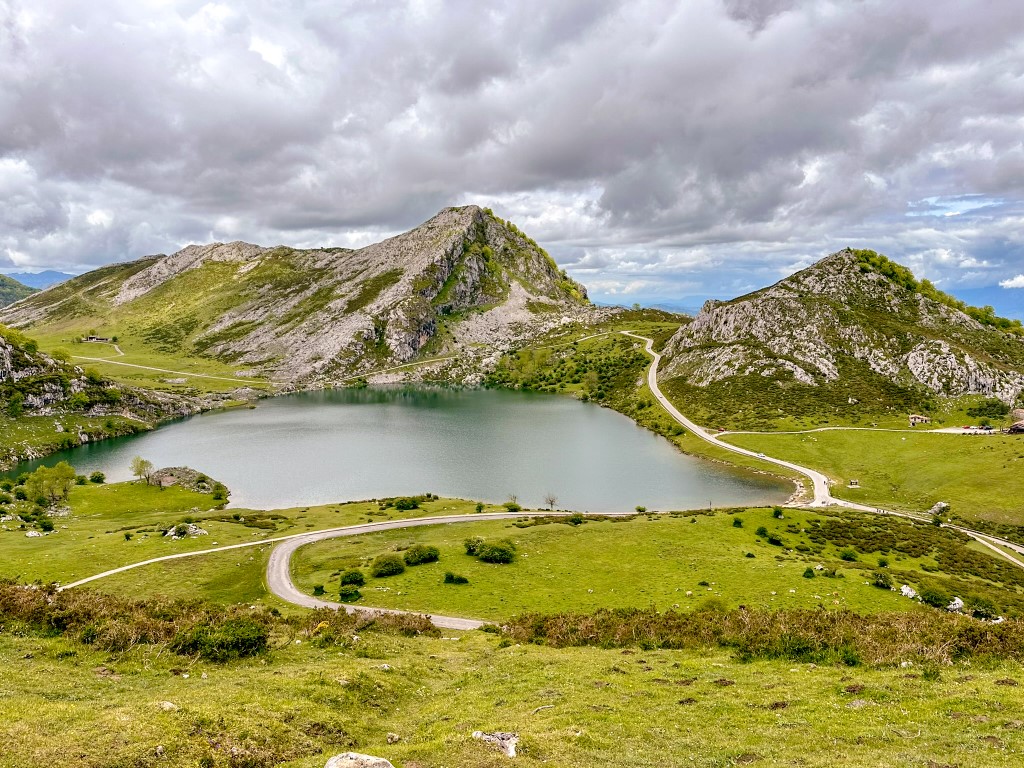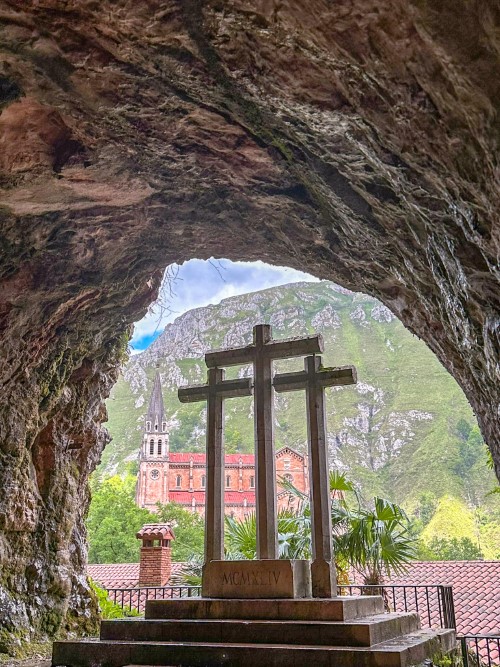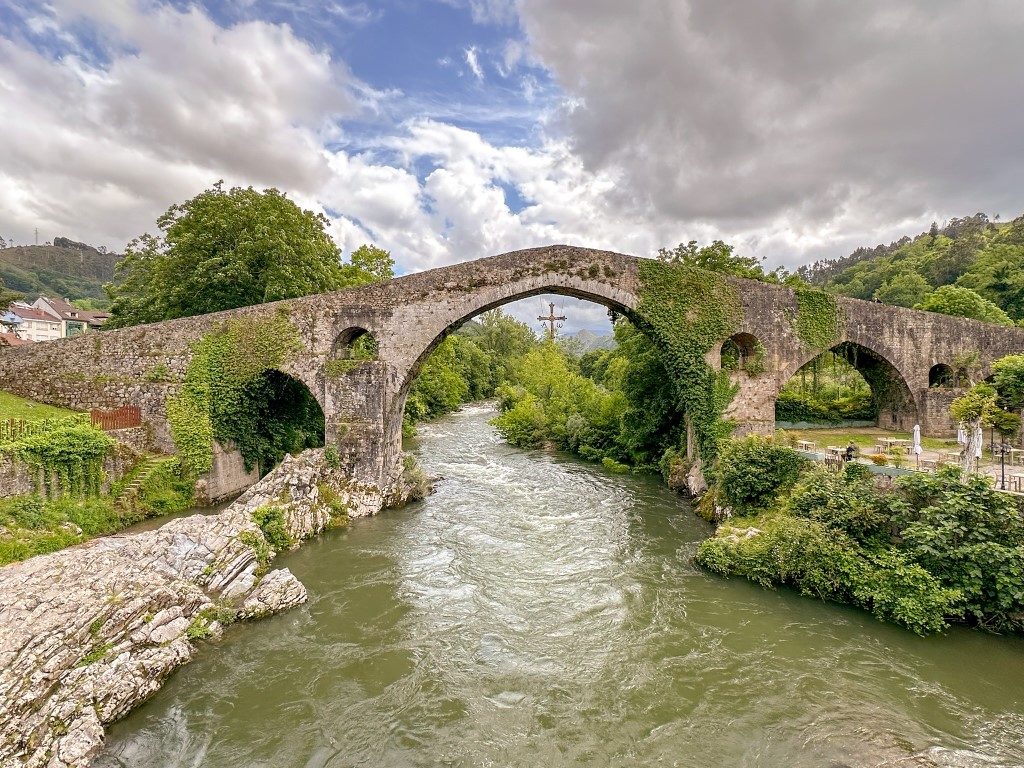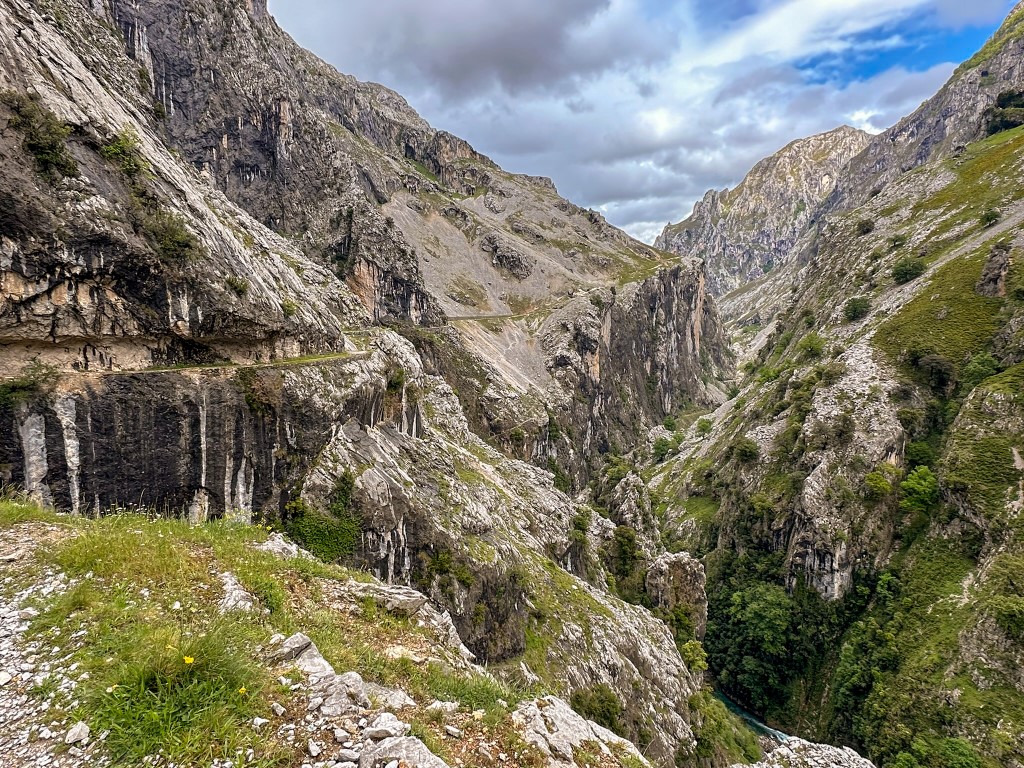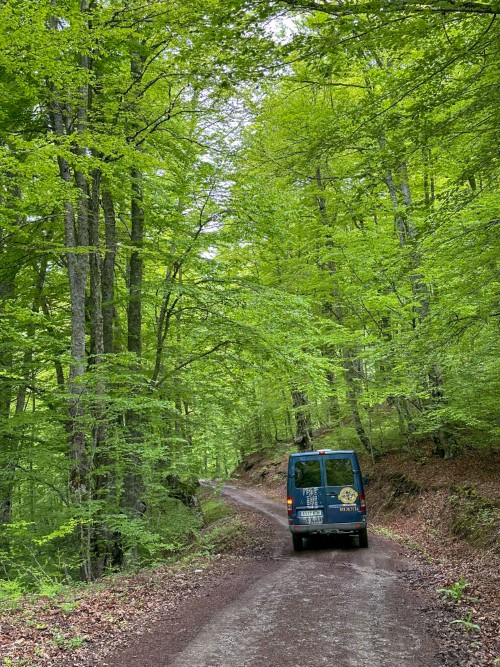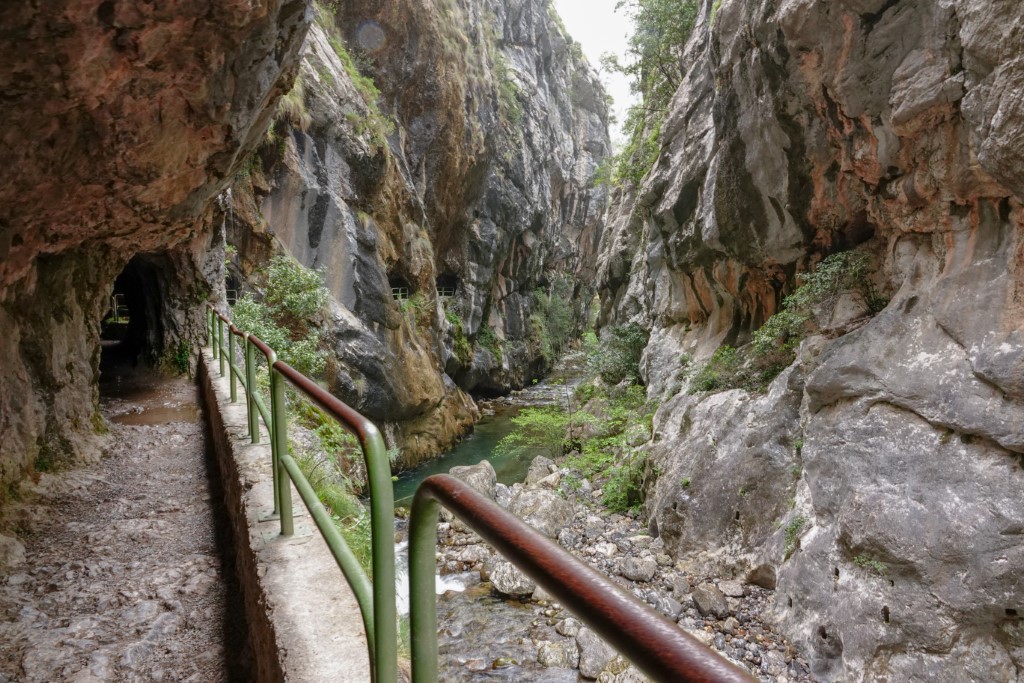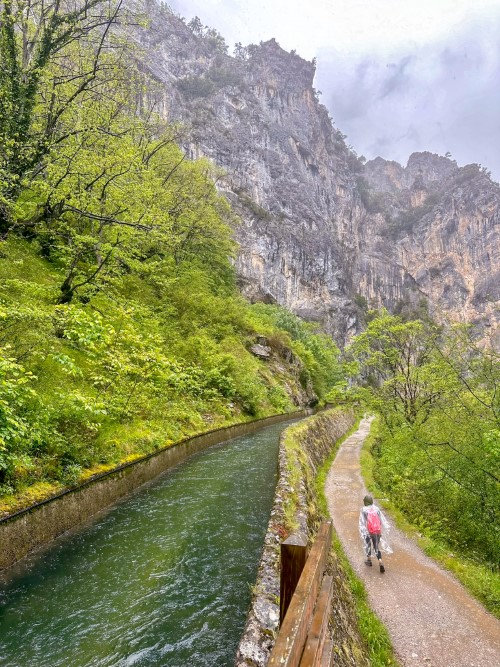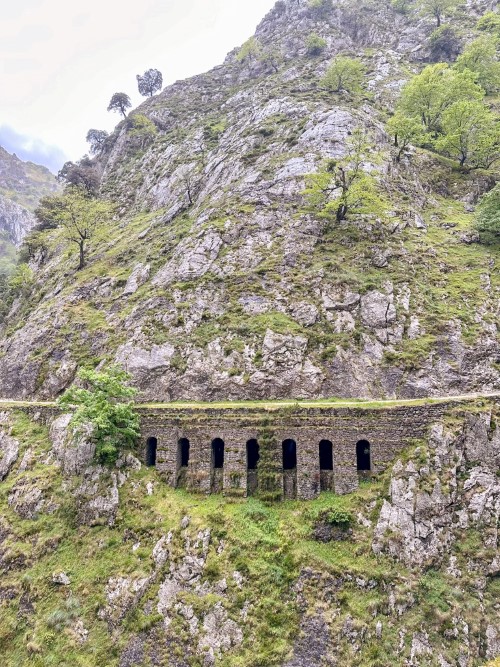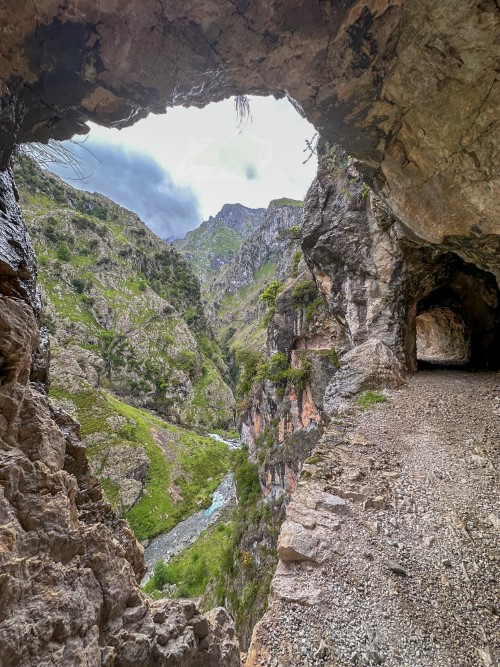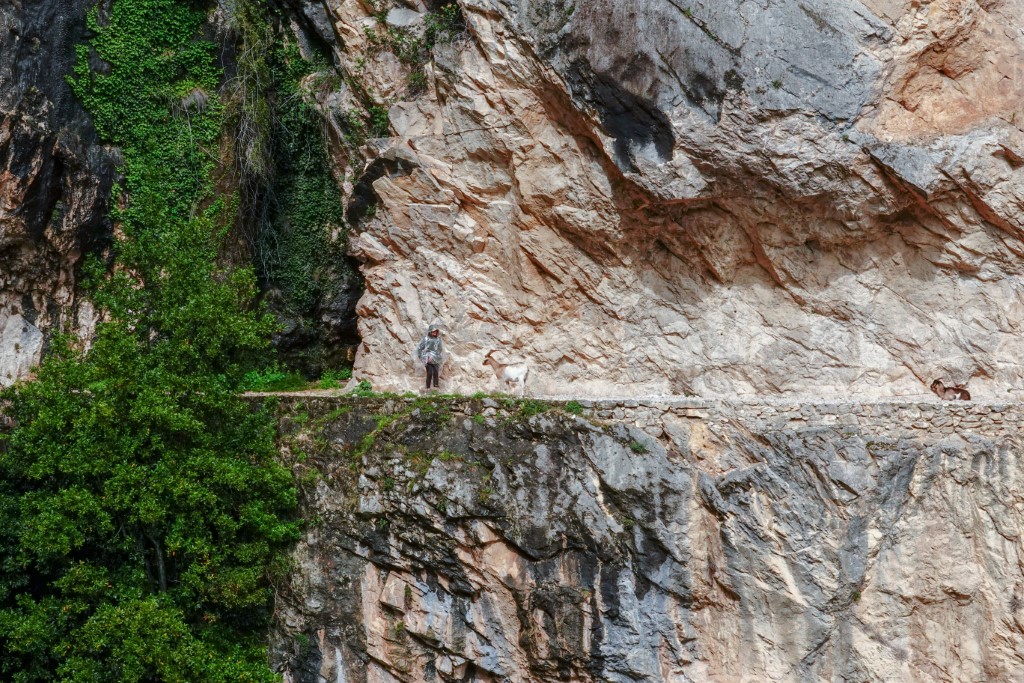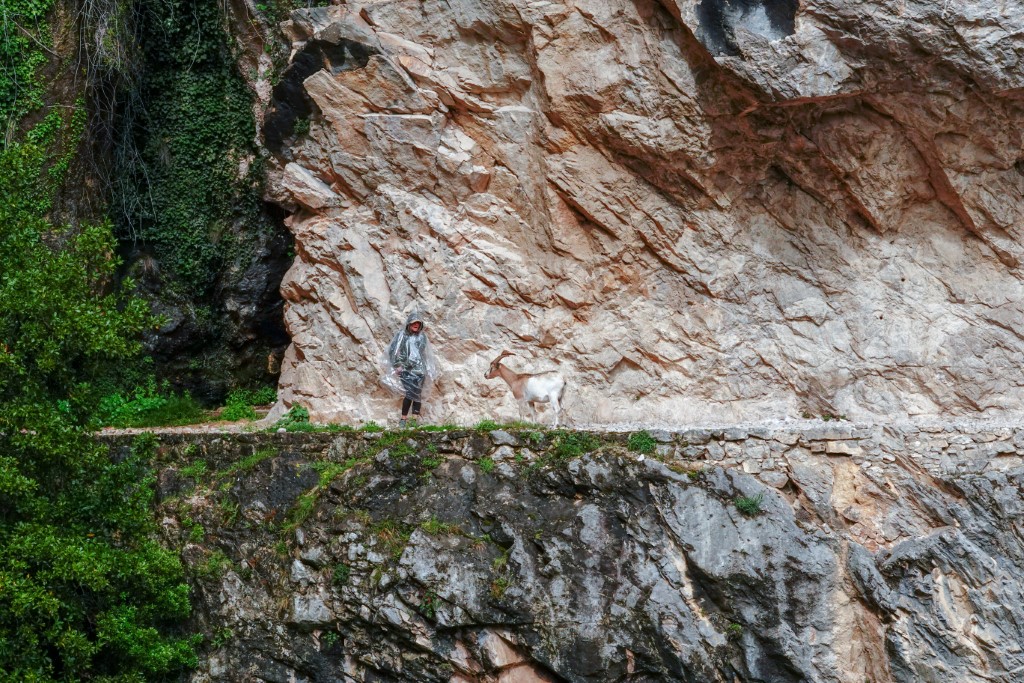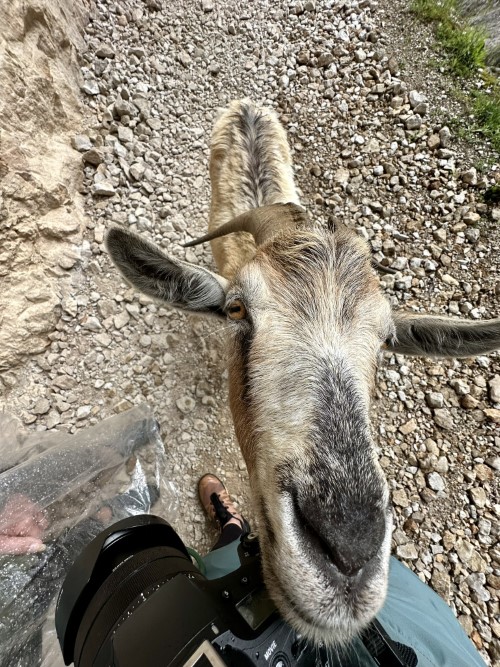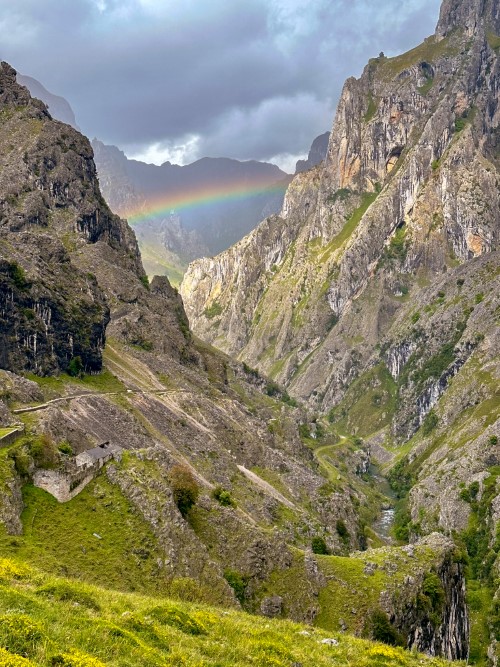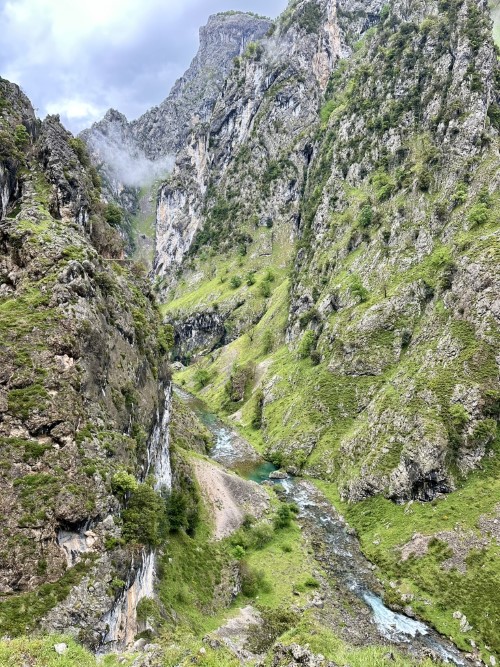Our route toward Santiago today encompassed a lunch stop in Lugo.
Lugo is the fourth most populous city in Galicia and has a very unique feature which is why I had included it in our itinerary. It is the only city in the world to be surrounded by completely intact Roman walls, which reach a height of 10 to 15 metres along a 2,117-metre circuit ringed with 71 towers. How cool is that?

We entered the walled city via one of the original gates and quickly decided that to walk the wall would give us the best viewpoint.
Almost immediately we were confronted by a fantastic mural depicting Caesar (I thought of Sam straight away..) note how even his shadow has been painted enhancing the 3D look.



We walked most of the circumference before succumbing to hunger pains and heading down into the town where we had a fairly forgettable lunch and then resumed our journey. The closer we got to Santiago the pilgrims were everywhere, on foot, on bikes and even on horseback. It sounds like a fun thing to do but not all the roads were that scenic, I think you’d have to pick your route carefully.
After looking at prices for Santiago accommodation (!) I had booked a small cottage in Arzúa, a rural area which would place us within a short drive. It turned out to be very unique, filled with objects the owner had collected in his travels some of which appeared quite valuable and I was glad we didn’t have a toddler with us. We immediately felt at home though as his rather sparse garden featured what I’m pretty sure was the Australian Callistemon Harkness – the Gawler hybrid bottlebrush!


The next day after taking a little time to navigate the streets of Santiago and then find a park we eventually made our way to the actual cathedral.
So, why is this the destination millions of pilgrims have toiled toward since the 9th century?
“According to a medieval legend, the remains of the apostle James, son of Zebedee were brought to Galicia for burial, where they were lost. Eight hundred years later the light of a bright star guided a shepherd, Pelagius the Hermit, who was watching his flock at night to the burial site in Santiago de Compostela…”
Where would we be without Pelagius I ask?
Whatever your belief, in 2023 over 440,000 pilgrims reached Santiago, some to follow their faith, others to follow their nose. It was busy when we arrived as I suspect it is everyday and we joined the throngs waiting to see inside the cathedral where allegedly the remains of St. James repose.



After waiting perhaps forty minutes and almost within touching distance of the entrance, the great doors were closed for a one hour mass! At this point we had to question our piety and subsequently decided to abandon the line and go for lunch. This turned out to be a good decision as when we returned after lunch there was only a very short wait to get inside.
Inside was ornate but dark, remember we had seen a lot of cathedrals by now… It was crowded and the ambience was not helped by a group of particularly loud German folk immediately in front of us. Eventually my disapproving looks led to them waving us on in front of them and the rest of the tour was quieter at least (as it should be in a Church whatever your belief I believe.)





I’m glad we visited and the rest of the city looked interesting had we more time but we decided we had seen enough of Santiago for today and after successfully locating the right car park we headed back toward Arzúa.
I had read about Galicia’s tallest waterfall being not far from home so in a lst minute decision we decided to go that way and without too much difficulty found the car park and signage pointing the way toward Fervenza das Hortas. It was a fairly decent hike from here via a wide, well marked path leading down to the canyon (passing a closer car park on the way 😜 ) and we saw no one. As the thunderous roar became louder I was anticipating how great it would be to have the place to ourselves, already relishing the photo opportunities.
That was until I rounded the last bend and realised we were not alone….
I guess he too was worshipping in his own way and perhaps he hadn’t had access to a shower on the trail… Either way, on the much harder hike back up the hill I thought it wise to warn the young lady at the front of a primary school group that we encountered coming down. Using a combination of sign language and actions she eventually got the message, turned away from the kids and quietly said “f^*k” – the same in Spanish apparently 🤣
Enough excitement for one day, tomorrow we cross the border into Portugal.

